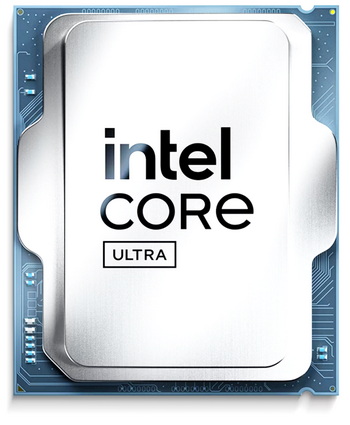INTRODUCTION

Exactly 2 weeks ago Intel finally unveiled their latest Core Ultra 200S series CPUs (also known as Arrow Lake up until recently) and since this is the true successor to their 13th generation (the 14th generation was basically a refresh of their 13th one) I expect there are countless people out there waiting for these reviews. Needless to say, the voltage issue Intel encountered with their 13th and 14th generation CPUs will have certainly made some consumers reluctant in upgrading to the new Core Ultra 200S line but as someone who's been around PCs since the early 90's I can only say that such unfortunate incidents have happened to many manufacturers over the years. With that out of the way with me today I have two of the very first Intel Core Ultra 200S models, the current flagship Core Ultra 9 285K and the Core Ultra 5 245K both of which I've spend just over a week testing.
Intel (Nasdaq: INTC) is an industry leader, creating world-changing technology that enables global progress and enriches lives. Inspired by Moore’s Law, we continuously work to advance the design and manufacturing of semiconductors to help address our customers’ greatest challenges. By embedding intelligence in the cloud, network, edge and every kind of computing device, we unleash the potential of data to transform business and society for the better. To learn more about Intel’s innovations, go to newsroom.intel.com and intel.com.
Unlike past CPUs by Intel the new Core Ultra 200S series CPUs are manufactured using TSMC (3nm process for the compute tile, 5nm for the graphics tile and 6nm for the SoC tile) and are based on Intel's latest LGA1851 socket (pretty much backwards compatible with LGA1700 coolers) which is where Z890 motherboards come into play. The flagship Core Ultra 9 285K model sports a total of 24 cores (8 Lion Cove performance and 16 Skymont efficiency ones - 24 threads) with a maximum frequency of 5.7GHz (4.6GHz for the E-Cores) together with 36MB level 3 smart cache and 40MB level 2 cache. On the other hand, the Core Ultra 5 245K packs a total of 14 cores (6 Lion Cove performance and 8 Skymont efficiency ones - 14 threads) clocked at up to 5.2GHz (again, 4.6GHz for the E-Cores) with 24MB level 3 smart cache and 26MB level 2 cache. Worth pointing out is that Intel claims an 9% IPC gain for their Lion Cove performance core compared to those of their previous generation (Raptor Cove) and an 32% IPC uplift for their Skymont efficiency core compared to previous models (Gracemont). Because of this Intel removed hyperthreading from their new Core Ultra 200S line and with temperatures and power efficiency being at the center this was probably a smart move. Both the 285K and 245K are also equipped with integrated iGPUs (Intel Graphics Xe-LPG / 4 Cores / Up To 8K @ 60 Hz) with a base frequency of 300MHz and boost of up to 2GHz for the Core Ultra 9 285K model and 1.9GHz for the Core Ultra 5 245K model. Intel has also equipped the entire Core Ultra 200S line with an integrated NPU 3 unit (Intel AI Boost) that features two Gen 3 NCEs (neural compute engines) delivering a peak performance of 13TOPS. Regarding power the flagship Core Ultra 200S 285K model comes with an 250W turbo power limit whereas the Core Ultra 5 245K has a turbo power limit of 159W. Other exciting features of the brand new Core Ultra 200S series of CPUs include overclocking improvements (16.6 MHz steps for P-cores and E-cores), CUDIMM DDR5 memory support for up to 48GB per DIMM (192GB total), 20 CPU PCIe 5.0 lanes, 4 CPU PCIe 4.0 lanes, support for 2 integrated Thunderbolt 4 ports. So, let’s see what Intel delivers with their latest Core Ultra 200S series CPUs.

 O-Sense
O-Sense







.png)

